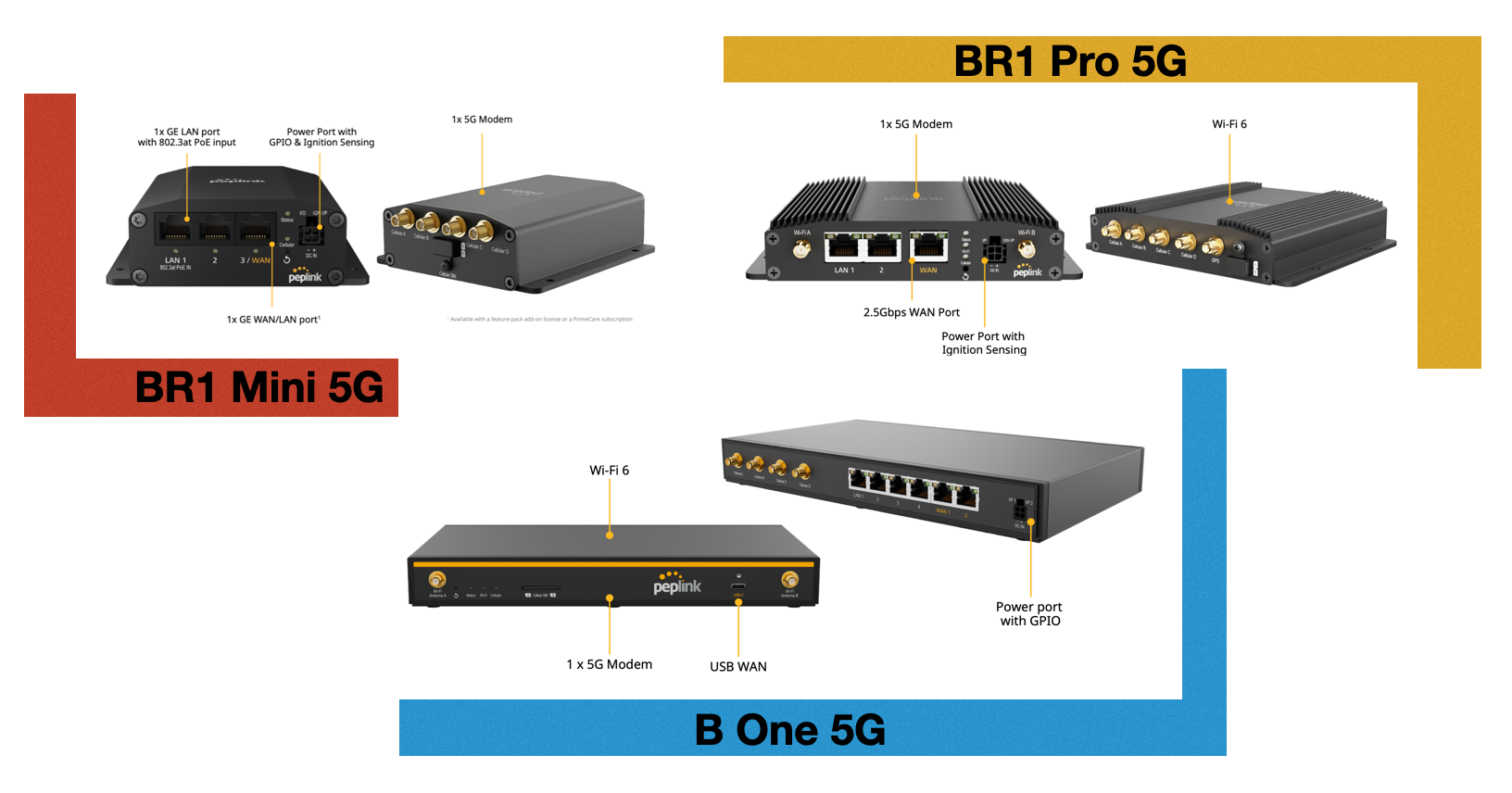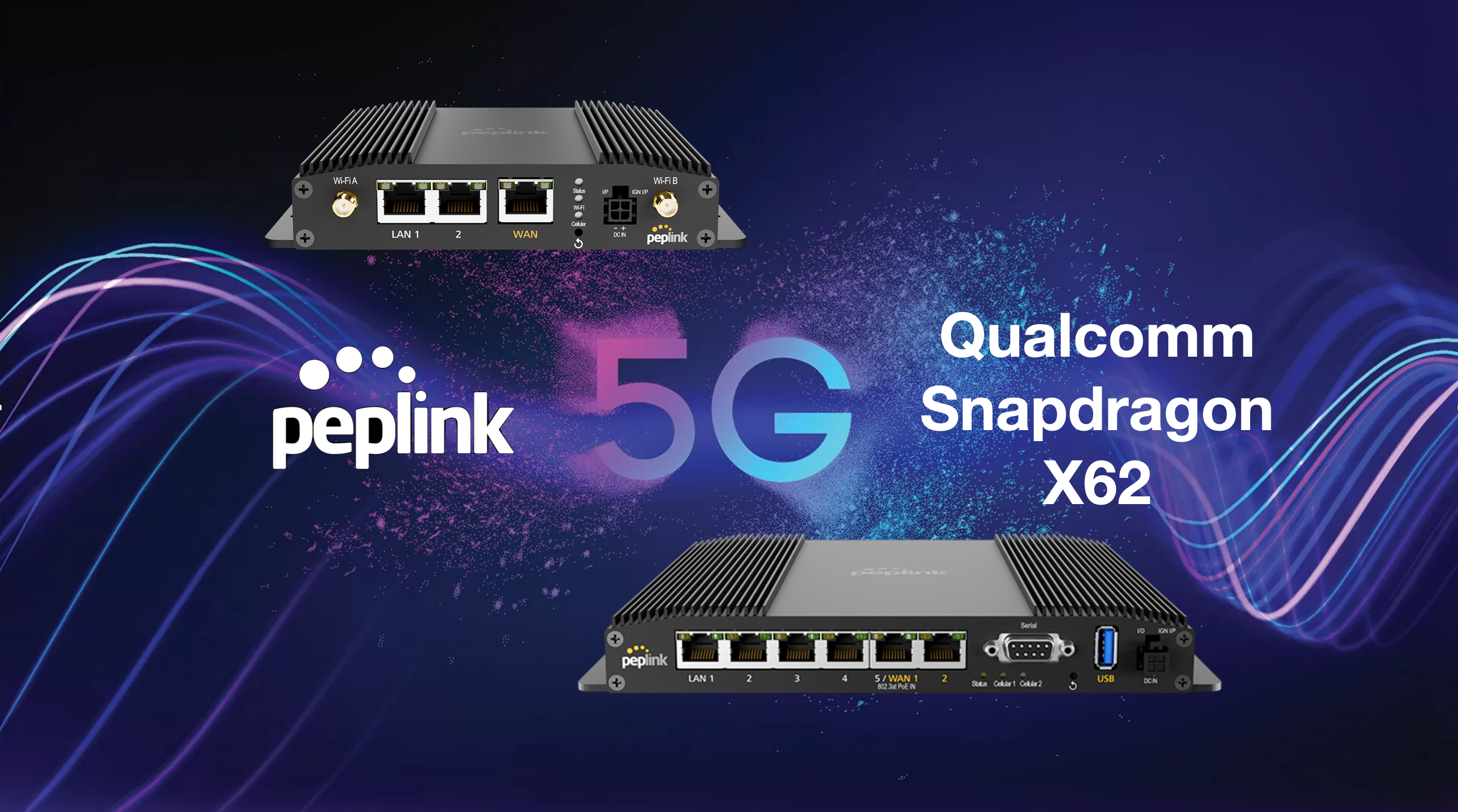
The advent of 5G technology has ushered in a new era of seamless and high-speed networking, prompting users to seek 5G solutions for a multitude of applications. Responding to this demand, Peplink, a leader in networking solutions, introduces three new 5G routers, all under $1,000: the BR1 Mini 5G, the BR1 Pro 5G, and the B One 5G. Each router offers unique features tailored to diverse networking needs while sharing some key similarities:
- PrimeCare subscription for 1 year, offering InControl 2 management, warranty with standard RMA, FusionHub license, and SpeedFusion.
- Certifications with major carriers like AT&T, T-Mobile, Verizon, and more.
- Redundant SIM slots for nano SIM cards as well as eSIM support.
- Support for external antennas to achieve the best performance where needed.
- IP Passthrough support for Ethernet and Cellular WAN connections.
Now let’s delve into the specifics of each router:
1. BR1 Pro 5G
The BR1 Pro 5G sets a high standard with its integration of cutting-edge technology. Equipped with a new x62 cellular module supporting 5G cross-band carrier aggregation and a wider range of 5G bands, this router promises exceptional performance. Its multi-core CPU ensures gigabit speeds, marking an 800% improvement over its predecessor, the BR1 Classic.
Key Features:
- Flexible for any environment, but best suited for mobile applications such as RVs, buses, or emergency vehicles.
- Ruggedized hardware.
- WiFi 6 support for reduced interference and simultaneous connection to multiple devices.
- 2x GB Ethernet LAN and 1x 2.5 GB Ethernet WAN.
- Accommodates 1 to 150 users with a throughput of up to 1 Gbps.
- SpeedFusion throughput supported up to 400 Mbps.
2. BR1 Mini 5G
Compact yet powerful, the BR1 Mini 5G packs a punch with its seamless connectivity and versatility. Featuring a global 5G modem and redundant SIM slots, it ensures uninterrupted connectivity by allowing effortless switching between carriers. With certifications from major carriers like AT&T, T-Mobile, and Verizon (C-Band), reliability is guaranteed.
Key Features:
- Ideal for those seeking a 5G backup connection that seamlessly integrates into existing networks.
- Small footprint.
- No WiFi or GPS support.
- Best suited for 1 to 60 users with a throughput of up to 300 Mbps.
- 2 x Ethernet LAN ports and optional Ethernet WAN port for flexible connectivity.
- SpeedFusion throughput supported up to 80 Mbps.
3. B One 5G
The B One 5G router offers seamless integration of LTE/5G connections, catering to diverse connectivity needs. With features like dual Ethernet WAN ports, WiFi 6 support, and a USB Type-C WAN port, it ensures ultimate versatility and adaptability. Firmware updates and endless support ensure longevity and reliability.
Key Features:
- Suited for home or office use, but can also work for mobile applications, such as RVs.
- Dual gigabit Ethernet WAN ports for failover, load balancing, or bonding.
- Accommodates up to 150 users with a throughput of up to 1 Gbps.
- SpeedFusion throughput supported up to 400 Mbps.
For a closer look at a comparison for these three devices, check out the Peplink comparison chart.
In conclusion, Peplink’s newest 5G routers cater to various networking requirements, offering a spectrum of features. Whether prioritizing compactness, performance, or versatility, there’s a router tailored to meet your needs. Upgrade your connectivity today and embrace the future of networking with Peplink’s innovative solutions.
Need some guidance on which 5G Peplink solution to select? Contact the experts at 5Gstore.com for assistance Monday thru Friday 9am to 6pm CT.



